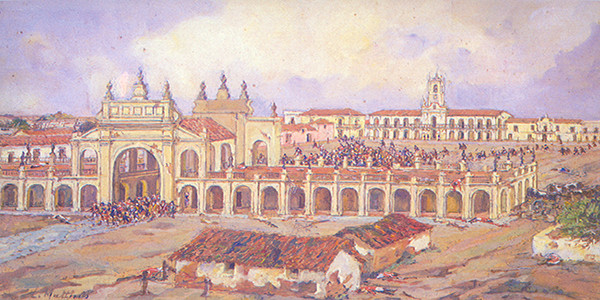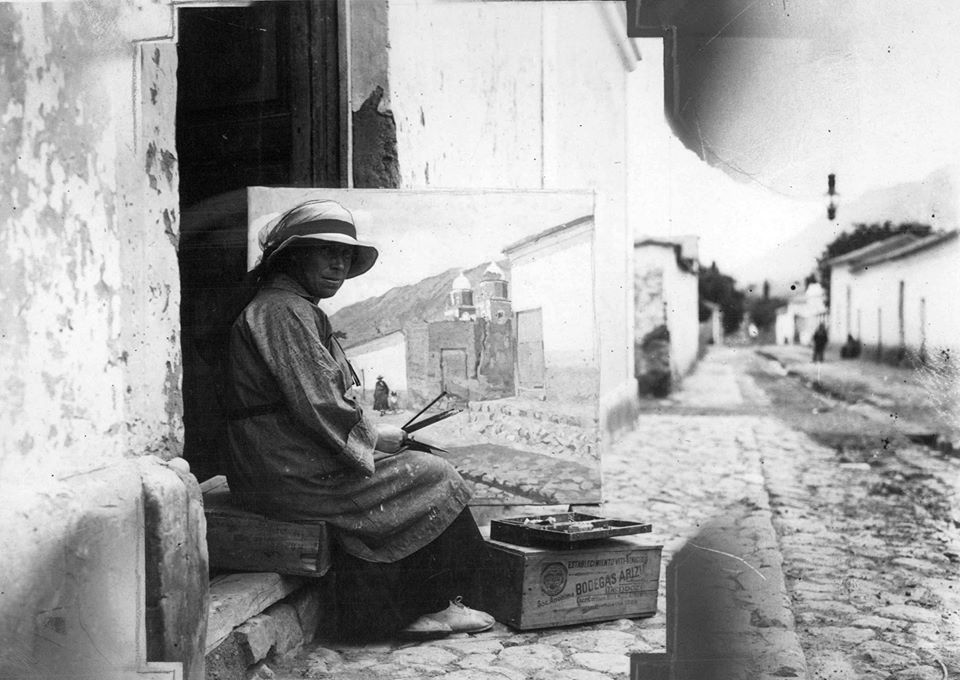En un día tan especial como lo es el 25 de Mayo, siempre vale recordar a aquellas personas que hicieron historia y marcaron a fuego su legado en nuestro país.
Dentro de ese contexto y desde el ámbito de la cultura, es bueno mencionar el aporte valioso de la artista francesa Léonie Matthis, responsable de ser la única artista que firmó la colección del Museo del Cabildo y la Revolución de Mayo.
Estamos hablando de la obra “25 de Mayo de 1810”, la pintura que representa y que además adhiere como registro histórico de la movilización del pueblo de Buenos Aires hacia el Cabildo en la mañana de la Revolución
Nacida en la ciudad francesa de Troyes en 1883, Matthis egresó a los 15 años de la Escuela de Bellas Artes de París. Cabe agregar que en 1904 -y por primera vez- la Academia de Bellas Artes de París admitió académicas del género femenino y Léonie Matthis fue una de ellas.
Antes de su llegada a Buenos Aires, la artista se casó con el retratista asturiano Franciso Villar. Una vez instalados en nuestro país, Matthis obtuvo el primer premio único para extranjeros en el Salón Nacional, en 1919.
Según informa en su artículo el Museo del Cabildo y la Revolución de Mayo, en la década de 1920 comenzó una línea de pinturas históricas, característica por sus series. En 1936 con motivo del IV Centenario de la Fundación de Buenos Aires produjo la primera serie de trece grandes cuadros titulada «Historia de la Patria a través de la Plaza de Mayo» por encargo de Oscar Carbone y María Luisa del Pino.

La serie se expuso ese año en la Farmacia Franco Inglesa. En la década del sesenta, en una subasta pública, la adquiere el Museo de la Ciudad de Buenos Aires Brigadier Cornelio Saavedra, donde permanece expuesta.
En cuanto a la técnica que usaba en sus creaciones, Léonie Matthis utilizaba su acuarela usando una forma similar al óleo llamada gouache.
La artista realizaba capas, utilizando pinceladas con acuarela opaca y luego plasmaba los colores claros y luces con blanco.
De esta manera, al secarse, los colores ofrecían una tonalidad clara de aspecto opalino. En su paleta primaban los colores cálidos, claros y luminosos, con trazos que reflejaban un paisaje de movimiento y vida.
Más allá de su versatilidad a la hora de crear, Matthis recurrió al asesoramiento de figuras de un círculo de sociabilidad intelectual para su realización de cuadros históricos. Entre ellos aparecían los historiadores Ricardo Levene y Enrique Udaondo, el escritor Leopoldo Lugones, Mario Buschiazzo y el sacerdote Guillermo Furlong, entre otros. También se documentó en museos, archivos y colecciones y leyendo libros de historia y relatos de viajeros, para hacer de su obra un viaje retrospectivo.
Más allá de este detalle, no asumió a su obra como documentación histórica y siempre se refirió a la recreación del pasado en términos de evocación o ensueño. Posteriormente Léonie Matthis se alejó del estilo pictórico del Centenario y de la semblanza de los próceres.


